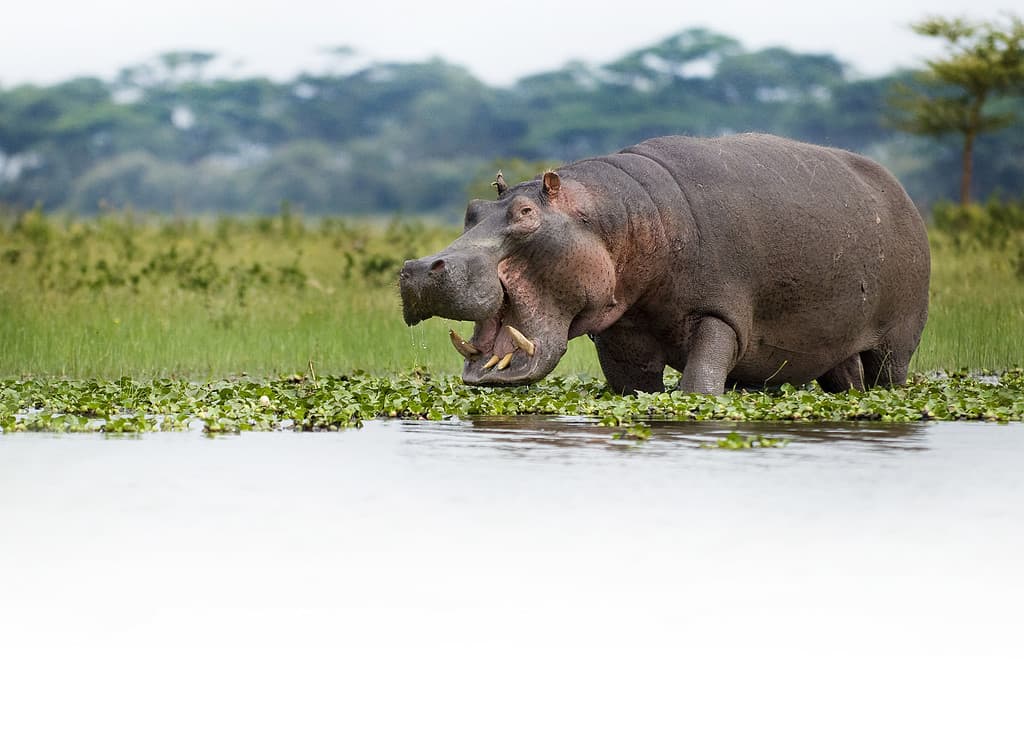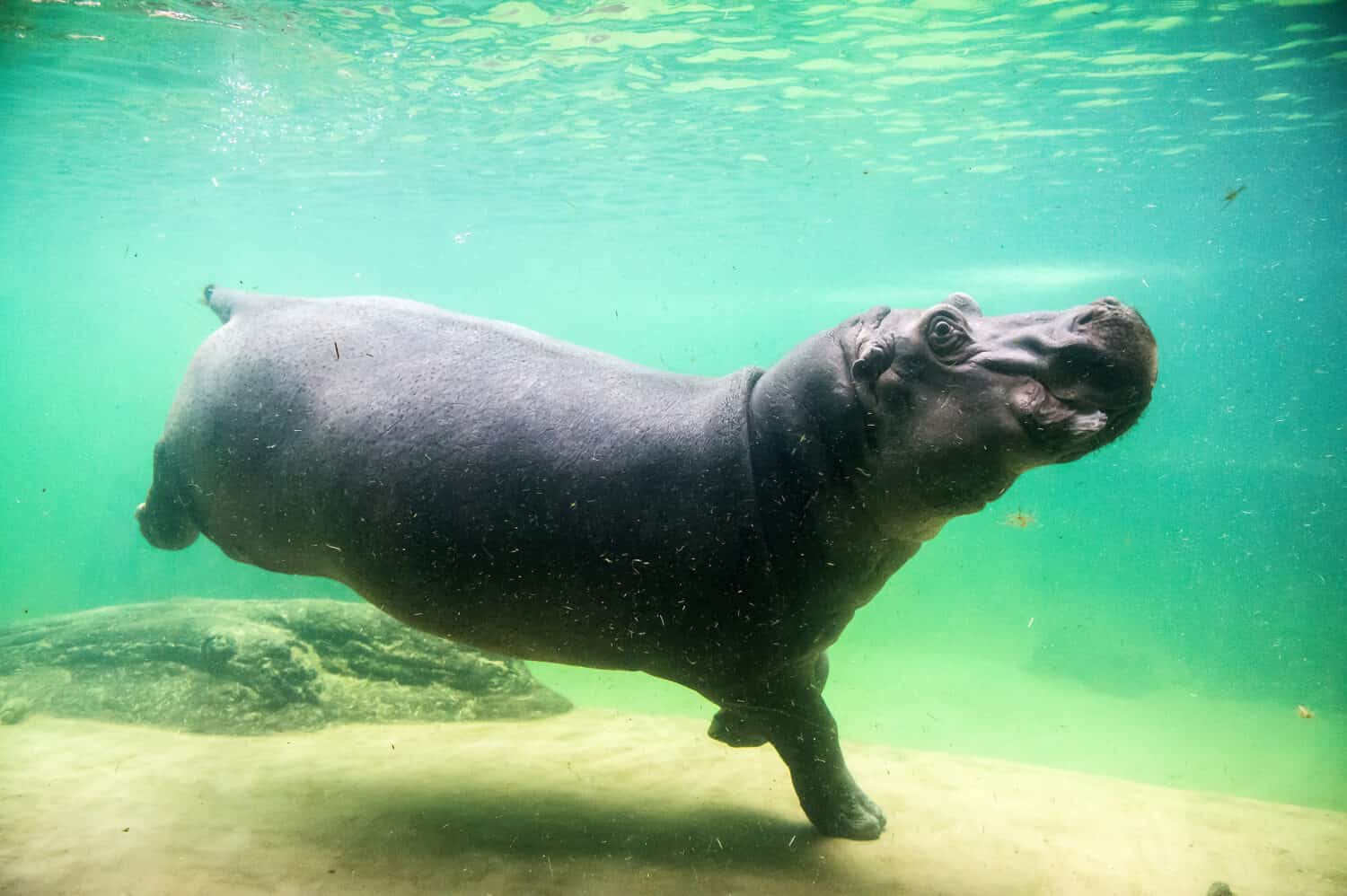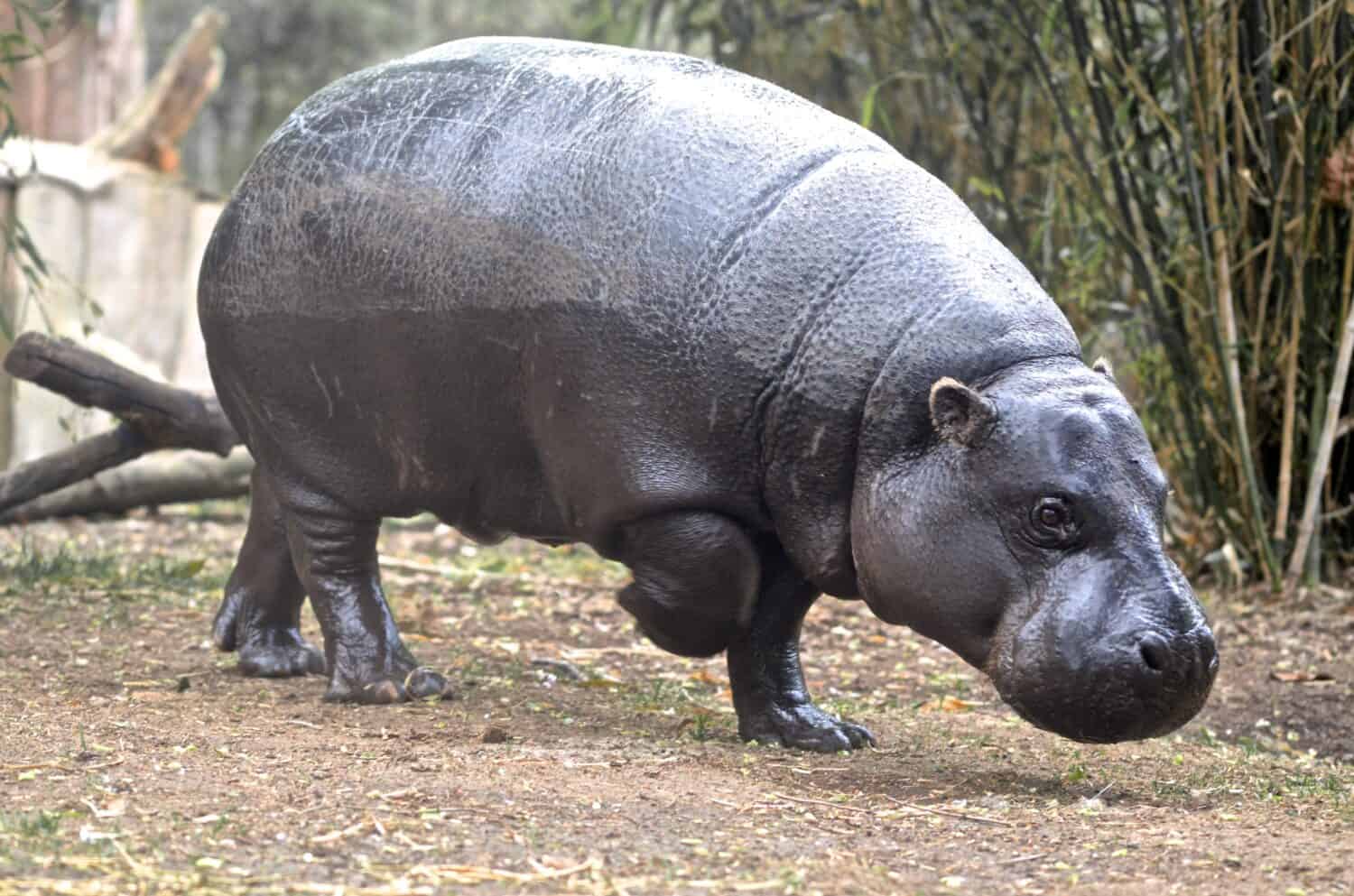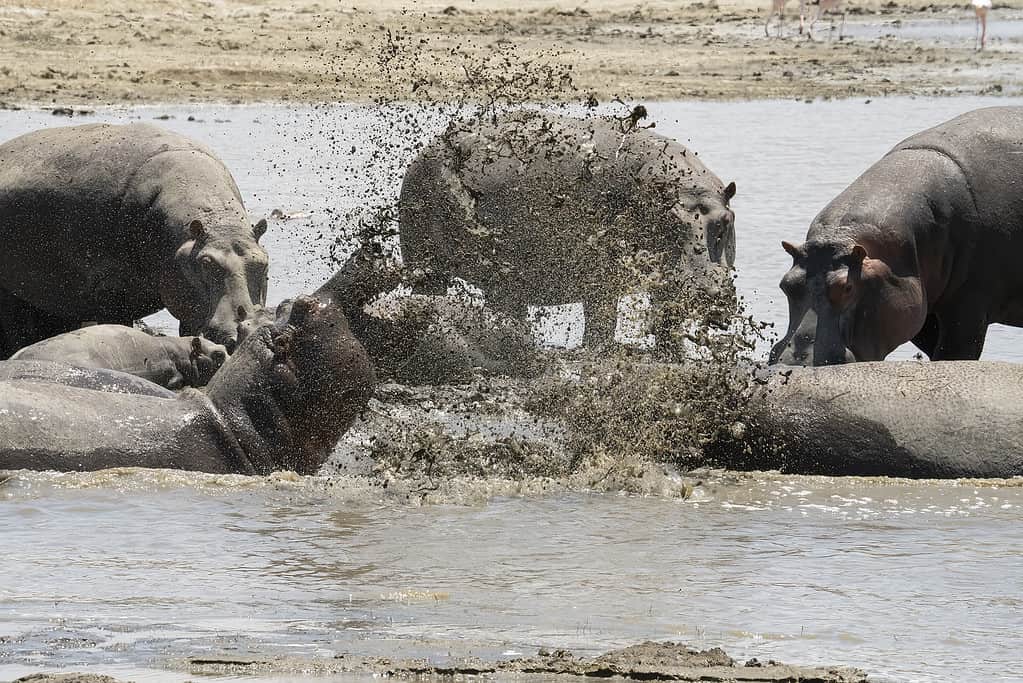As behemoths of the animal kingdom, hippos command attention with their sheer size and dominating presence. Despite their enormous barrel-shaped bodies, hippos move with surprising elegance, especially in the water. Their incredible size, graceful movements, and formidable nature only add to their allure. Hippos spend most of their time submerged in water, enjoying their unique semiaquatic lifestyle. But have you ever wondered how long a hippo can stay underwater? Let’s dive in and find out!
Types of Hippos

Common hippos are also called river hippos and Nile hippos.
©TheBionicDan/ via Getty Images
Two species of hippos exist on Earth today: the hippopotamus or common hippopotamus (Hippopotamus amphibius) and the pygmy hippopotamus (Choeropsis liberiensis). Both species get their names from the ancient Greek word, hippopótamos, which means “river horse” or “horse of the river”.
The common hippo is native to sub-Saharan Africa and where it lives with other hippos in social groups. It is the third largest land mammal in the world, but it is also a vulnerable species. Adult male hippos can weigh up to 9,920 pounds, and females typically weigh up to 3,000 pounds. They grow 9.5 to 16.5 feet long and range from 4.3 to 5.4 feet tall at the shoulder.
Pygmy hippos, on the other hand, are much smaller, reaching just 2.46 to 3.28 feet at the shoulder and weighing 397 to 606 pounds. They also have thinner bones and move more gracefully than common hippos. Pygmy hippos are a threatened species native to West Africa, where they live alone or in pairs in forest habitats.
Discover How Long a Hippo Can Stay Underwater

The eyes, ears, and nostrils of a hippo are on top of their heads.
©JMx Images/Shutterstock.com
Hippos often spend nearly 16 hours each day in the water. The common hippo can stay underwater for up to five minutes at a time. However, these giant mammals typically only hold their breath for 30 to 60 seconds at a time before coming up for air. Newborn hippos can hold their breath, but not as long as adults — they can only stay underwater for just 40 to 60 seconds at a time. The pygmy hippo can stay underwater for three to five minutes at a time. They tend to spend more time walking on land than in the water.
How Do Hippos Stay Underwater So Long?
Underwater Walking

When hippos run through the water, it looks a bit like a slow gallop.
©Lena Ivanova/Shutterstock.com
Hippos are semiaquatic mammals who spend around 16 hours each day in the water. What’s strange about this lifestyle, however, is that hippos can’t actually swim! In fact, hippos are so large, and their bone structure is so dense, that they naturally sink rather than float. So, instead of swimming, hippos run, walk, or jog along the bottom of rivers, propelling their bodies forward like large chubby torpedoes. They have a bit of webbing between their toes as well, which helps them to move forward through the water more easily. When hippos need to breathe, they simply use their back legs to push off the ground, propelling their large bodies up to the surface.
Eyes, Ears, and Mouth

Pygmy hippos have longer back legs than common hippos and less webbing between their toes.
©Enate Images/Shutterstock.com
Although hippos can’t breathe underwater, their bodies have adapted to allow breathing while they are mostly underwater. The ears, eyes, and nostrils are on top of a hippo’s head, which allows it to continue to breathe, hear, and see, even when the rest of its body is mostly underwater.
When a hippo fully submerges its body completely underwater, its eyes are protected by a special clear membrane. This membrane serves like a built-in set of goggles, enabling the hippo to see underwater without hurting its eyes. In addition, hippos’ ears and nostrils close up when they submerge, helping them to hold their breath and not get water in their lungs or inner ears. Hippos are so well-adapted to the water, that they even sleep underwater! Their bodies are equipped with a special subconscious reflex that allows them to surface, take a breath, and sink back down without any disturbance.
The pygmy hippo, however, is slightly different, as it does not spend as much time in the water as the common hippo. Its ears and nose still close up underwater, but its eyes do not protrude on top of its head. In addition, pygmy hippos have longer legs than common hippos, and their feet do not have as much webbing.
Nocturnal Protection

Hippos spend most of their time in mud and water to protect themselves from the sun.
©iStock.com/Moshe Einhorn
Hippos possess a remarkable combination of resilience and vulnerability. Their skin is thick and protective — but it is also super sensitive to the scorching African sun, putting them at risk of burns and dehydration. Instead of typical sweat glands, hippos secrete a unique substance known as “blood sweat”, which gets its name from its red coloring. Similar to sunblock, blood sweat helps to protect the hippo’s skin.
However, hippos can still get dehydrated and even burned if they are out of the water for too long. So, to counteract this, hippos spend the majority of their day immersed in water or mud, skillfully managing their body temperature and safeguarding their delicate skin. However, as daylight fades and the sun’s intensity wanes, hippos gracefully emerge from their aquatic sanctuary to graze.
The photo featured at the top of this post is © Lena Ivanova/Shutterstock.com
Thank you for reading! Have some feedback for us? Contact the AZ Animals editorial team.






